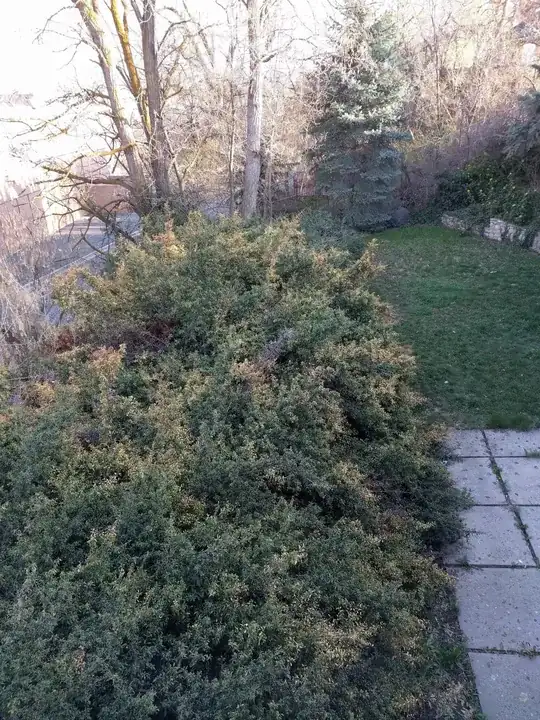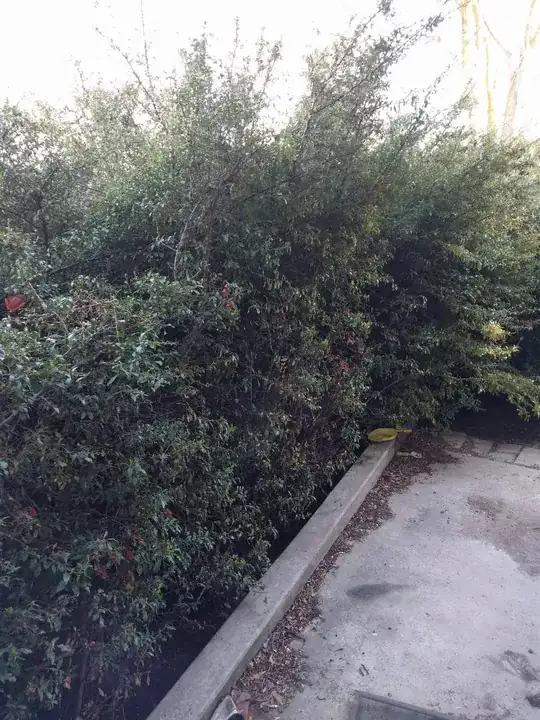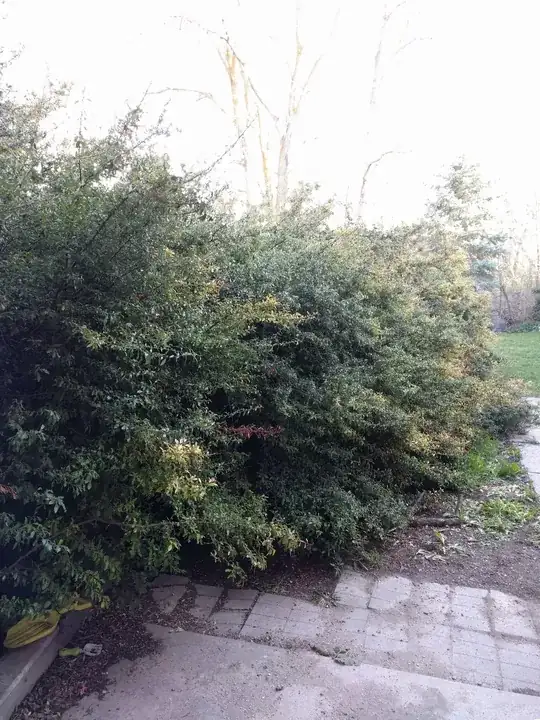I have an old house (built in the 50s) on a large lot (~ 1/2 acre) that was previously owned by some older folks that didn't keep up with the landscaping very well.
I've been slowly trying to get it in order, and while I have a ways to go, my current issue is with a monstrous pyracantha hedge. The back of the lot slopes down quite a ways to a street about 20 ft below.
 The pyracantha covers most of that hillside. It's grown significantly in to the back yard area as well.
The pyracantha covers most of that hillside. It's grown significantly in to the back yard area as well.
What are some effective ways of trimming this beast back? I've used loppers, sheers, and a hedge trimmer.
 The loppers and sheers works alright, if a bit slow. The hedge trimmer wasn't that effective as many of the branches are a bit too thick. Any advice on understanding how far back I can go?
The loppers and sheers works alright, if a bit slow. The hedge trimmer wasn't that effective as many of the branches are a bit too thick. Any advice on understanding how far back I can go?
I'm OK with sacrificing the look of the hedge as I'm guessing this thing has encroached quite a bit in to the yard space (At least a few feet, probably 6+).
Also, any good advice on how to dispose of all this material? I have a chipper, which I have used in the past, but it's even slower than cutting because of how hard it is to handle the branches. For those unaware, pyracantha is also known as firethorn, and for good reason. It has huge needle like thorns that go through just about everything. I've found that using rose gauntlets and going slow I can mostly avoid getting stuck. Mostly.
